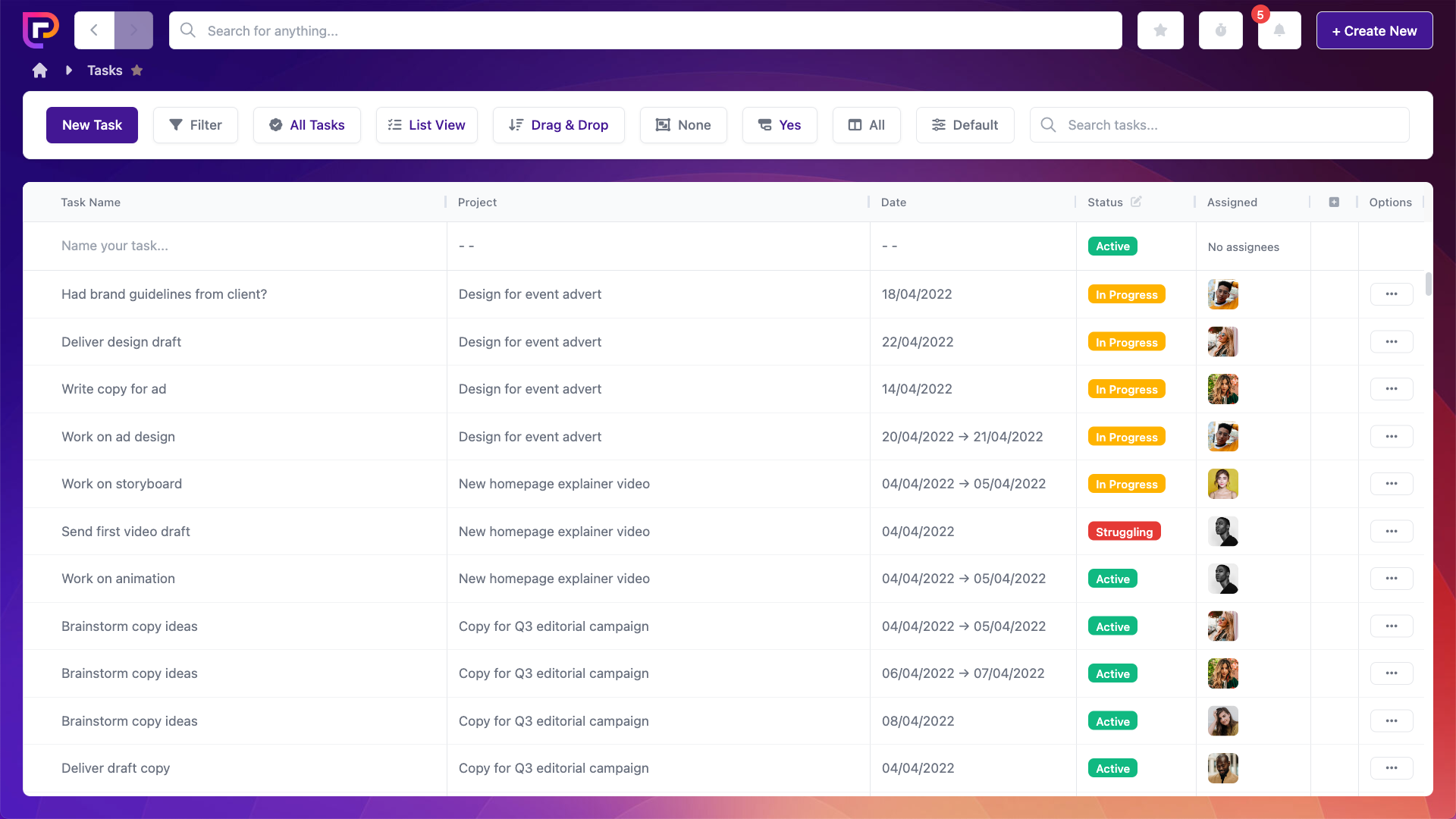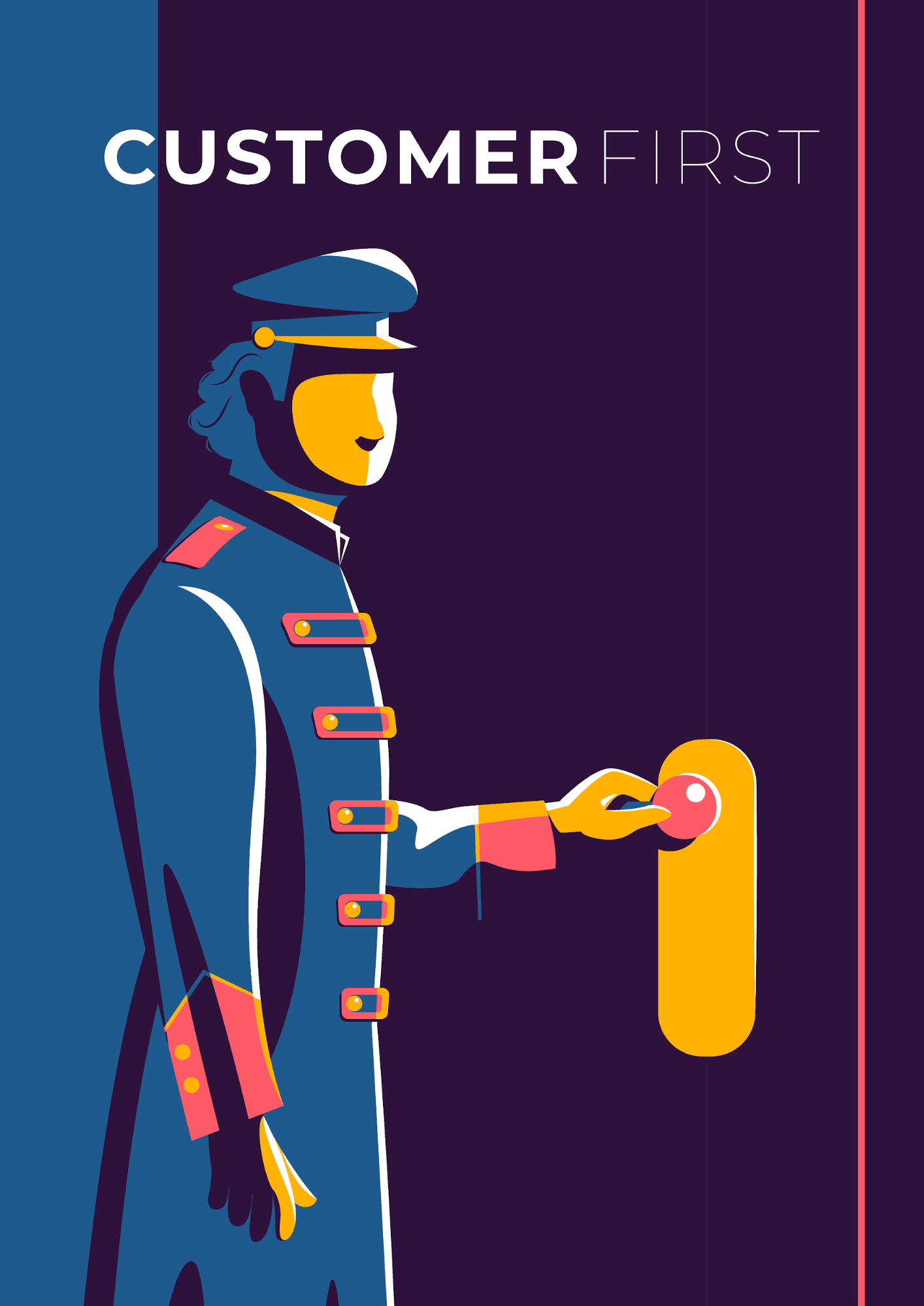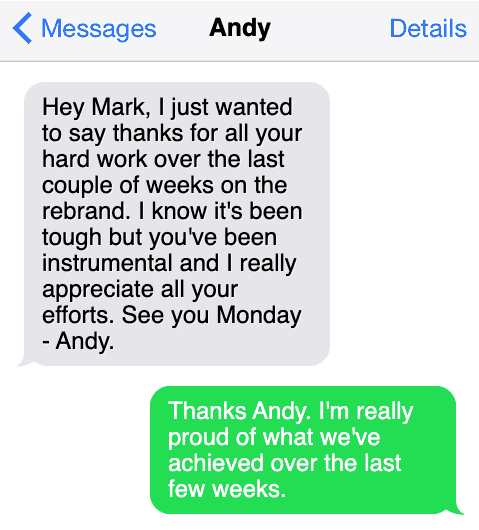Last updated on 5th March 2024
Team performance is a make-or-break factor for any company’s success, but let’s face it – boosting productivity and motivation can be a real challenge.
But don’t worry, we’re here to help you bring your team to new heights with some fresh and exciting approaches.
From gamification to open communication, we’ve rounded up 11 innovative ways to supercharge your team’s performance and drive success.
So, let’s get started!
Article Contents
1. Training and development
It’s often said that ‘Knowledge is power’ – and in many ways, effective training and development remain the cornerstone of outstanding team effectiveness and performance.
In the most basic sense, it’s important to equip your team with the knowledge and skills they need to carry out their role effectively. But it’s also massively important to allow training time to help them grow towards their own ambitions.
Studies have consistently shown that investment in training and development is money well spent.
It’s been strongly linked to reduced employee churn and increased team productivity.

We could write a whole other article about what ideal training looks like, how it should be delivered – but we reckon the crucial components of training are:
Identify training needs: First and foremost, it’s important to identify any knowledge/skill gaps that are stopping your employees from excelling in the ‘nuts and bolts’ of their daily work. You can do this during regular (bi-weekly/monthly) reviews and catch-ups. You might consider creating a sort of knowledge bank covering the common areas of uncertainty in your team, with ‘on-demand’ content to help them brush up on these areas.
Identify training ‘wants’: When you have employees who are crushing it with their regular work output, it’s important to keep them growing by asking what’s next? You can let the employee drive this process, identifying areas of passion and interest that they’d like to push towards. Obviously, it’s up to you how closely this should be tied to their existing role and the overarching goals of the business. There will be times when, to keep hold of your star performers, you need to be flexible on this, accepting that – ultimately – you will continue to enjoy the benefits of their skills by accommodating their long-term ambitions.
Assign time: Regardless of whether you’re able to allocate funds to your training programmes, make no mistake: the most precious resource when it comes to training is time. We recommend booking regular training time out in the employees’ calendar – maybe a day, or a half day, every calendar month. Once this time is booked in, it needs to be respected. Don’t let it slip away. Empower your employees to say ‘no’ to things that pop up and threaten to interrupt their training time, unless it’s absolutely critical. If things do interfere, make sure they get that time back during quieter spells elsewhere in the month.
2. Set (and measure) goals
We all know that goals motivate and encourage us to achieve more. There’s no doubt that goals are a great way to improve team effectiveness.
But still, people get goal-setting wrong.
We’re like a bunch of sheep, regurgitating talk of SMART goals – specific, measurable, achievable, realistic, time-tied.
But far too many people set goals that are beyond their control, because they focus on what they want to achieve rather than the actions of how they’ll achieve it.
Let’s illustrate this with an example. Let’s say you’re looking to get in shape. Clearly, “Get in shape” alone is a terrible goal.
So, using the SMART philosophy, you might think a good goal would be: lose 10lbs in the next 8 weeks, right? That’s specific, it’s measurable, it’s achievable, it’s realistic and it’s time-tied. So what’s the problem?
Well, this goal doesn’t really focus on controllable behaviours and actions. It doesn’t specify the ‘how’ – and the ‘how’ is obviously a very important part of achieving your target.
So really what you should be doing is asking what tasks you need to complete in order to ‘get in shape’ – or whatever your objective might be. So, in order to achieve ‘X,’ you need to do ‘Y.’
Therefore, your goal shouldn’t be ‘lose 10 lbs in 8 weeks.’ Rather, you might say to yourself: “For the next 8 weeks, I will go to the gym 3 times per week, and exercise for 45-60 minutes at a time.”
This is totally controllable, totally accountable – it’s a simple yes or no question: did you put the time in, or not? The actual weight loss will take care of itself, based on you hitting your goals – which are fully in your control.

The golden rule: “Only set goals you can fully control.” Check out our downloadable form to help you through this process…
3. Incentivise performance
As committed as YOU are to improvement, there’s no getting around the fact that this is a two-way street: improving team performance requires buy-in from the people in your team.

The 34th President of the United States Dwight D. Eisenhower once said something that cuts right to the heart of this issue:
Good employees are generally motivated to achieve and perform by a sense of professional pride, but there are times when they need to be given a tangible reason to up their contribution. This is where employee incentives come in.
You might think this is just an exercise in throwing money around, but that isn’t generally the case. Research conducted by the Incentive Marketing Association found that nearly two-thirds of employees (65%) actually prefer non-cash incentives. There are lots of creative ways to offer non-cash incentives to your employees – time off, travel incentives, tickets to sporting events, awards, gift cards and more.
So here’s a question: what motivates the people who you’re relying on to up their game? What can you offer them that you know will encourage them to go above and beyond your expectations? If you don’t know, you need to find out. Bring the topic up with them in a one-to-one environment and encourage them to be as honest as they can. Some will be purely motivated by money, which is fine. Others will want to work less, enjoy social events, or simply be motivated by recognition from management.
Once you understand what really pulls their levers, you can respond to this by offering appropriate incentives tailored to their unique characteristics.
You should also be careful not to ‘overdo’ incentives to the point where they lose their lustre. They work particularly well when you have a short-term need to boost performance – during a busy period, or approaching a firm deadline.
4. Facilitate excellent internal communication
It’s a simple, if unfortunate fact, that most people just aren’t great communicators. This is a real shame because communication between leaders and teams is fundamentally important.
Communication gives clarity, builds trust and ensures direction of focus.
As much as you’d like information to flow effortlessly around your team, this is pretty unlikely to happen automatically. Things will get missed, and important information will get lost, if you don’t put systems and processes in place to facilitate excellent communication.
There are two angles to this.
Firstly, interpersonal; make sure you schedule one-to-one meetings on a regular basis, to get your people in a room with you, without an agenda, and ask how they are. Encourage them to be open and honest, and respond to the issues they raise. Escalate where necessary; represent their interests in other parts of the business.

As business thought leader Gary Vaynerchuk says:
One-to-ones are an important opportunity to demonstrate that you work for your employees, winning their trust and fighting their corner. Listen more than you speak, and commit to resolving the issues they have. In doing so, you eliminate barriers to their full potential as employees.
The second angle worth exploring is more general organisational feedback. Not everyone will be quite so forthcoming with their issues, so you might consider running anonymous surveys to unpack any significant issues. A simple tool like SurveyMonkey will allow you to do this quickly and easily.
Put up a feedback/suggestion board or simply go old school and have a suggestion box. Be aware that people aren’t always comfortable vocalising their concerns or ideas ‘out loud.’
5. Make meetings productive
Isn’t this just a continuation of the previous point? Well, no, it isn’t. As we all have probably experienced – meetings don’t always equate to communication!
The truth is, a frightening amount of time is spent – and often wasted – in unproductive meetings that we could all stand to cut out altogether.
That’s not to say meetings as a whole are a bad idea – quite the opposite. They can, and often do, add incredible value to an organisation, representing a hugely beneficial source of collaboration, creativity and innovation.
But to avoid wasting time, it’s always best to follow these simple pointers:
– Make sure to only invite people who need to be there. Control the invite list!
– Set (and stick to) an agenda to avoid the conversation drifting off-topic.
– Schedule less time for the meeting, and enforce the time allocated. Consider allocating 15 or 30 minutes instead of a full hour, and keep things focused.
– Ban phones and laptops from meetings to ensure everyone is on-topic.
– Set action points during the meeting and make sure everyone goes away with things to do.
There are a few ways to fundamentally rethink how you go about meetings in your business.
For example, you might choose to emulate Oprah Winfrey’s approach to meetings. Essentially she starts every meeting with a simple question: “What are we going to come away from this with?”

The result is that, rather than arbitrary ‘catch ups’ where you each brain dump what you’ve been up to for the past while and nothing really gets agreed – you can end up with a single, high-value discussion point, that really helps move the business forward.
Discussion points might include things like:
“How can we improve customer satisfaction?”
or…
“What can we do to ensure Product A is launched as per the release schedule?”
Bottom line – you come away with action points based on quality discussions. Agreed ideas to improve things that matter within your business.
If you don’t have a single discussion point in mind, why not democratise the process? Let your team vote on the issues that matter to them. Sprint agency Wily have a formula for meetings that you may find useful.
6. Effective project management
High performing teams are made up of diverse, unique people who often have their own ways of working.
This is generally a good thing; it brings lots of new approaches and contributes to creative, inventive solutions.
But it can cause problems, too.
Did you ever find yourself looking for a particular file, or a message, only to realise – after many hours – that it’s locked away on somebody’s desktop, or in their private inbox? (Bonus points if you realised this after they left the business, or just after they left on a 2 week vacation!)
Problems like this are as annoying as they are frequent.
Project management is all about getting everybody working on one system, with a single message stream, agreed timelines and tasks.
Using the right project management system helps give managers important project visibility – with deliverables divided into ‘tasks’ tied to particular dates and assigned to specific people.

It also gives one place for all internal and external communication, meaning that projects are organised and can be accessed and reviewed by whoever, whenever.
Someone’s off sick?
Someone leaves the business?
No problem! With a project management system, everything is stored in one place – optimising the sharing of information, reducing the need for customer repetition and ultimately leading to a simpler, easier experience for everybody.
7. Shared purpose, vision and culture
We’ve already touched on the importance of motivation. But it’s important to make the distinction that people aren’t just motivated to increase performance for extrinsic rewards.
In other words – people aren’t just motivated by money or success. We want our work to mean something.
The idea that our daily tasks don’t exist in isolation, but really matter as part of a broad, noble purpose invariably motivate and inspire us to give our best, whatever role we play individually.
Does your brand have a vision of the better world you’re trying to create, and the role that each person has to play in that noble journey? If not, you might want to take some time to change this.
Culture is another bedrock of the modern workplace and can make a huge difference to your team performance (and morale.) It’s often your core differentiator as an employer.
If you don’t already have a culture, and a set of values that describe that culture, defined, we recommend the below exercise which we’ve undertaken for our own brands:
Get your whole team in a room. Encourage them to write down what they believe to be the behaviours/attitudes/beliefs that illustrate your team when it’s at its best. Go through these. Isolate the ones that are most common, and enshrine them. Hang them around your office on posters/artwork. They are your culture, and it’s all the more powerful because it’s been decided by people on the ground in your business.




Once you’ve defined your culture in this way, you can embed it into every aspect of your business – hiring, onboarding, retention, performance reviews.
8. Give recognition
We’ve already talked about incentivising performance, but while incentives can work, there’s a more ‘base’ box to tick here: recognition.
Humans innately crave recognition. Again, we want to know that we’re making a difference and that our work is appreciated/noticed. Sadly, the majority of workers don’t receive this.
Recognition doesn’t have to be complicated: try the personal touch. Send a text message or a private email to someone who’s been pulling out the stops and tell them they’ve been instrumental and their hard work is appreciated. You might be surprised at the response.

9. Be flexible
It’s always helpful to remember that the ‘people’ you manage are actually ‘people!’ We’re all so busy at work, we can forget that each team member has a whole life, just like us, with dozens of other things to balance.
One of the dominant trends in our world of work right now is the demand for flexibility. And it’s important to be aware of.
Thanks to the rise of online tech and collaborative tools, people are increasingly able to work whenever, wherever, even across continents and time-zones.
It’s a big jump for many companies to consider, but flexible working in terms of hours and location are surprisingly easy to implement.
You can manage flexible hours in a simple spreadsheet to ensure everyone works up their contracted hours, and use collaborative tools – Google Drive, project management systems, etc. – to allow people to work from a location that’s convenient to them.
Giving people flexibility over their hours and location will empower them to offer more to the team, increasing employee engagement and motivation. This kind of flexibility will help optimise retention, AND throw open your hiring criteria so you can hire from anywhere in the world. It helps you attract, and retain, great talent – which can only benefit your overall team performance over time, particularly when you’re dealing with specialist skills.
10. Give great feedback
Feedback is an essential part of continuous improvement, for all of us.
As a team leader it’s vitally important to give quality feedback on the work our teams do. This doesn’t mean just telling them when they did a good job, or a bad job, but delivering both in a spirit of supportiveness and kindness.
Giving negative feedback isn’t always the easiest thing in the world to do, particularly when you’re trying to build positive working relationships. But just think of a time where someone gave you really constructive, critical feedback.
Did it kill you? Did it make you hate that person? Of course not.
Peer-to-peer feedback can also be really valuable when delivered and received in the right way – for example during group/team meetings where work can be critiqued and reviewed.
11. Automate where you can
If flexible working is one of the dominant trends in the world of work, then automation and AI is undoubtedly the other.
Understandably, there’s a great deal of concern about how automation might impact human workforces.
But there are a number of ways automation can massively help human workers, freeing them up to focus on tasks and responsibilities that require a more human touch – boosting team efficiency and adding much greater value to the organisation as a whole.
Make no mistake – the limitations that have historically existed around AI have either been ironed out or are in the process. More and more SaaS companies are implementing impressive AI features now, including us!
How you use AI in your business will be determined by how your people spend their time. For example, if your customer service teams spend a large amount of their day responding to simple customer enquiries, you might consider implementing chatbots, or creating content/resources like videos or FAQ pages to help customers solve their own problems.
This frees up your customer service team to really help the people who need it, under less time pressure, optimising overall performance and customer satisfaction.
Final thoughts
We all aspire to be perfect. But, as the old saying goes – perfection is a moving target.
It’s really unlikely that you’ll ever reach a point in your team where everything is just perfect.
Instead, focus on building the habits of continuous improvement. Use the steps we’ve outlined in this article: set goals, measure team performance, provide training, give great feedback, and communicate with your team about what tools and processes can be put in place to make their life easier.
A happy team is an effective team and many of these changes will also boost employee satisfaction, as well as making everything run smoother: you might be surprised how far these small improvements take you over time!
And don’t forget, you can always rely on Project.co to massively improve communication and task management for your team.
Project.co is a project management tool designed to help great teams achieve great things! We can help you improve team productivity, achieve your team’s goals and get where you want to be!

